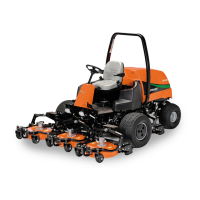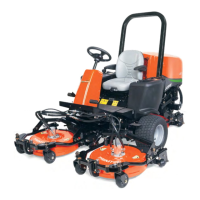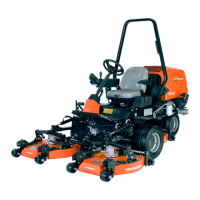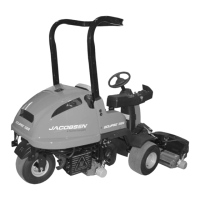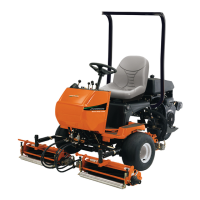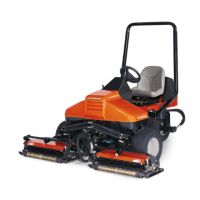6-22 4181384 First Edition
HYDRAULICS
6
Weight Transfer Circuit Schematic
and Theory of Operation
See Figure 6-14.
System Conditions:
• Engine running
• Weight transfer switch in the on position
• Cutting units lowered
NOTE
See “Weight Transfer Circuit—Theory of Operation” on
page 4-45 for the electrical operation of this circuit.
The purpose of the weight transfer circuit is to allow the
transfer of weight from the cutting units to the wheels to
improve traction. This is done by applying slight upward
pressure on the lift cylinders.
Operating pressure oil supplied to the lift valve by the
steering circuit, flows to the primary weight transfer valve.
With the primary weight transfer valve energized,
operating pressure oil flows to the weight transfer relief
valve and through the secondary weight transfer valve.
Operating pressure oil is then routed to the check valve,
closing the valve. Operating pressure oil is also routed to
the rod side of the lift cylinders, placing upward pressure
to the lift cylinders.
Gravity pulls the mower decks down, pulling against the
lift cylinders. This applies back pressure through the
secondary weight transfer valve and to the pilot line of the
adjustable weight transfer relief valve. As the pressure
increases, the relief valve will open to vent excess oil flow
to the hydraulic tank. Once the oil pressure drops to a
level lower than the relief valve setting, the relief valve will
close. This regulates the upward pressure applied to the
lift cylinders.
NOTE
The weight transfer relief valve should be adjusted to
operating conditions. If the cutting units are lifting off the
ground when going over undulations, the relief valve
pressure is adjusted too high. If excessive wheel slippage
occurs when traveling up a hill, the relief valve pressure is
set too low.
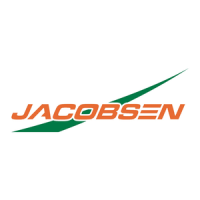
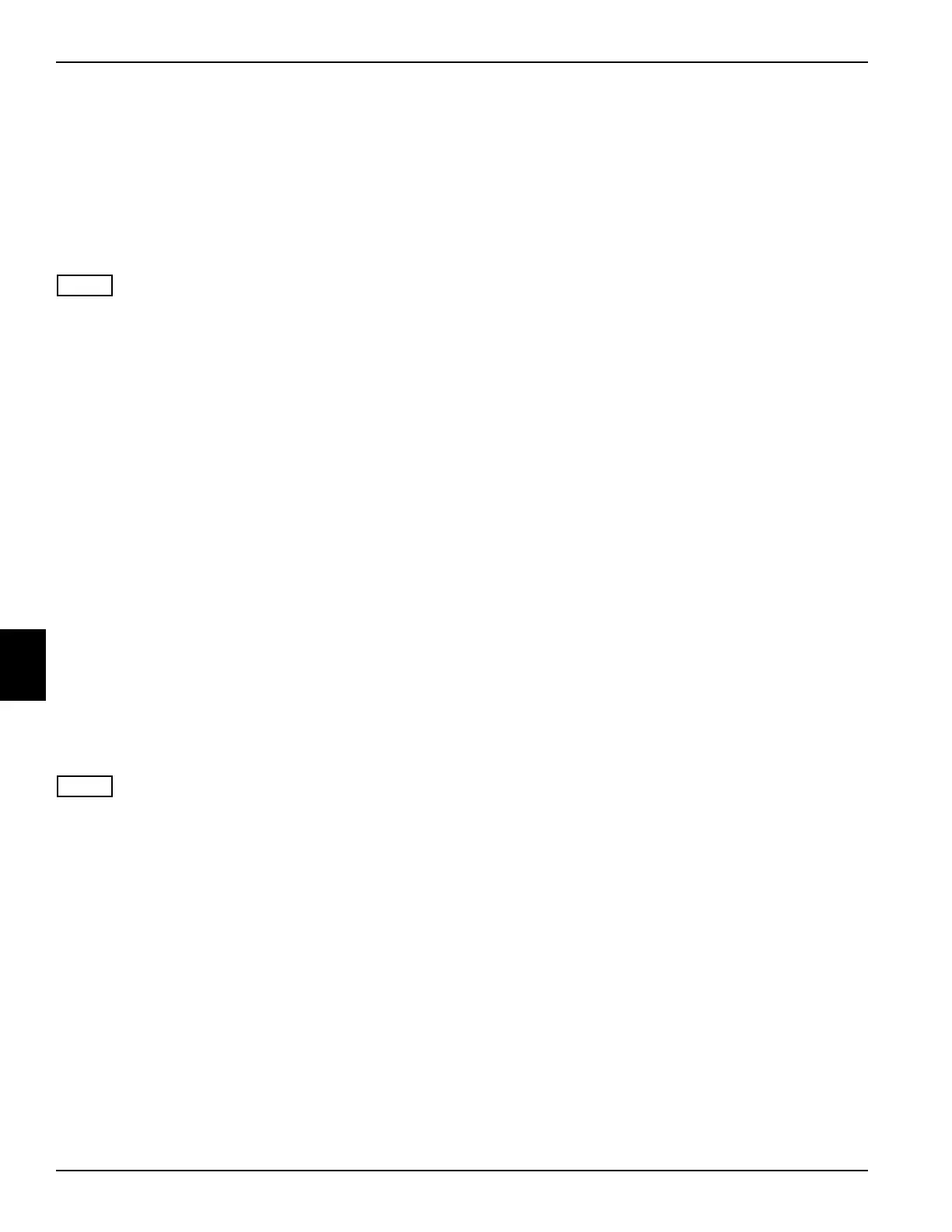